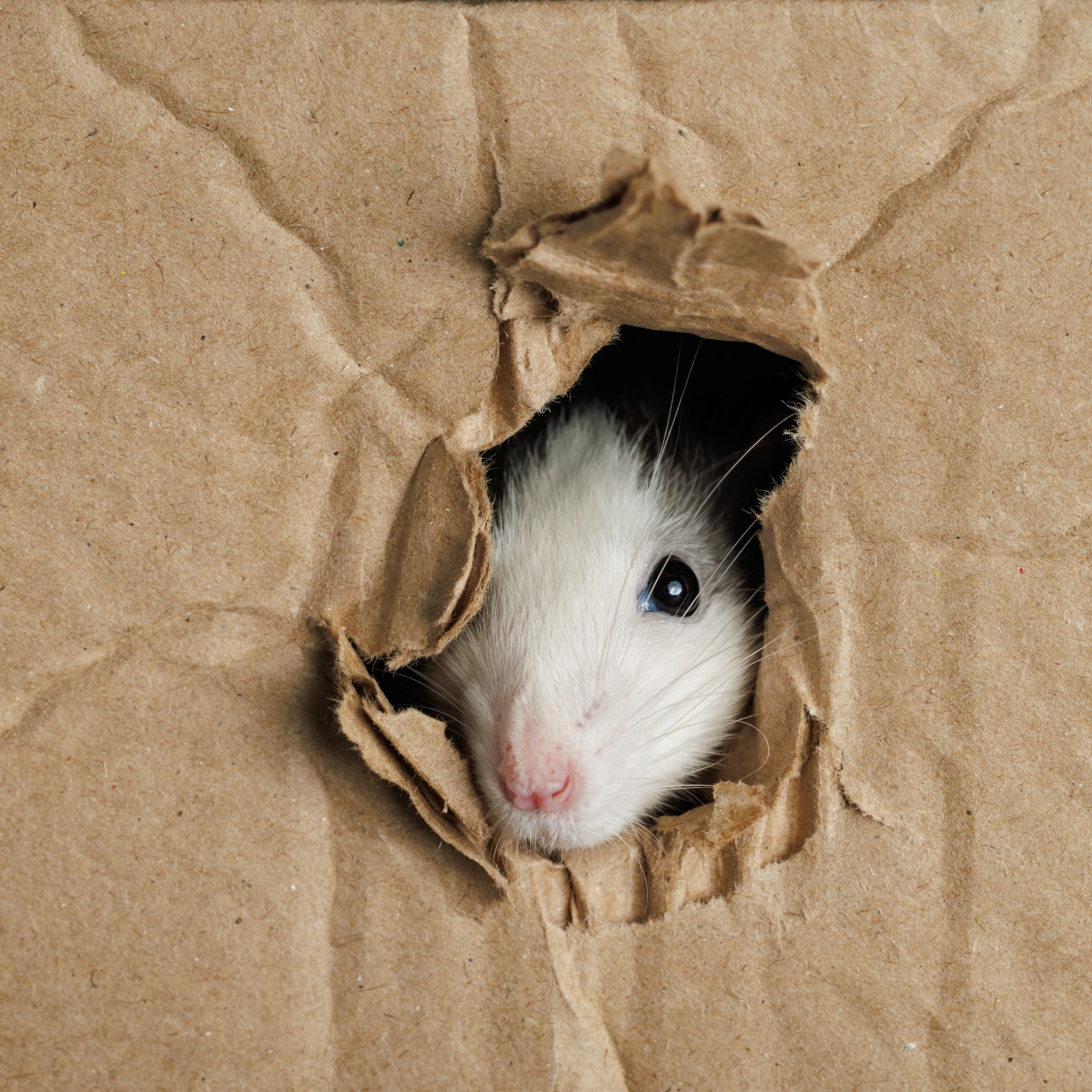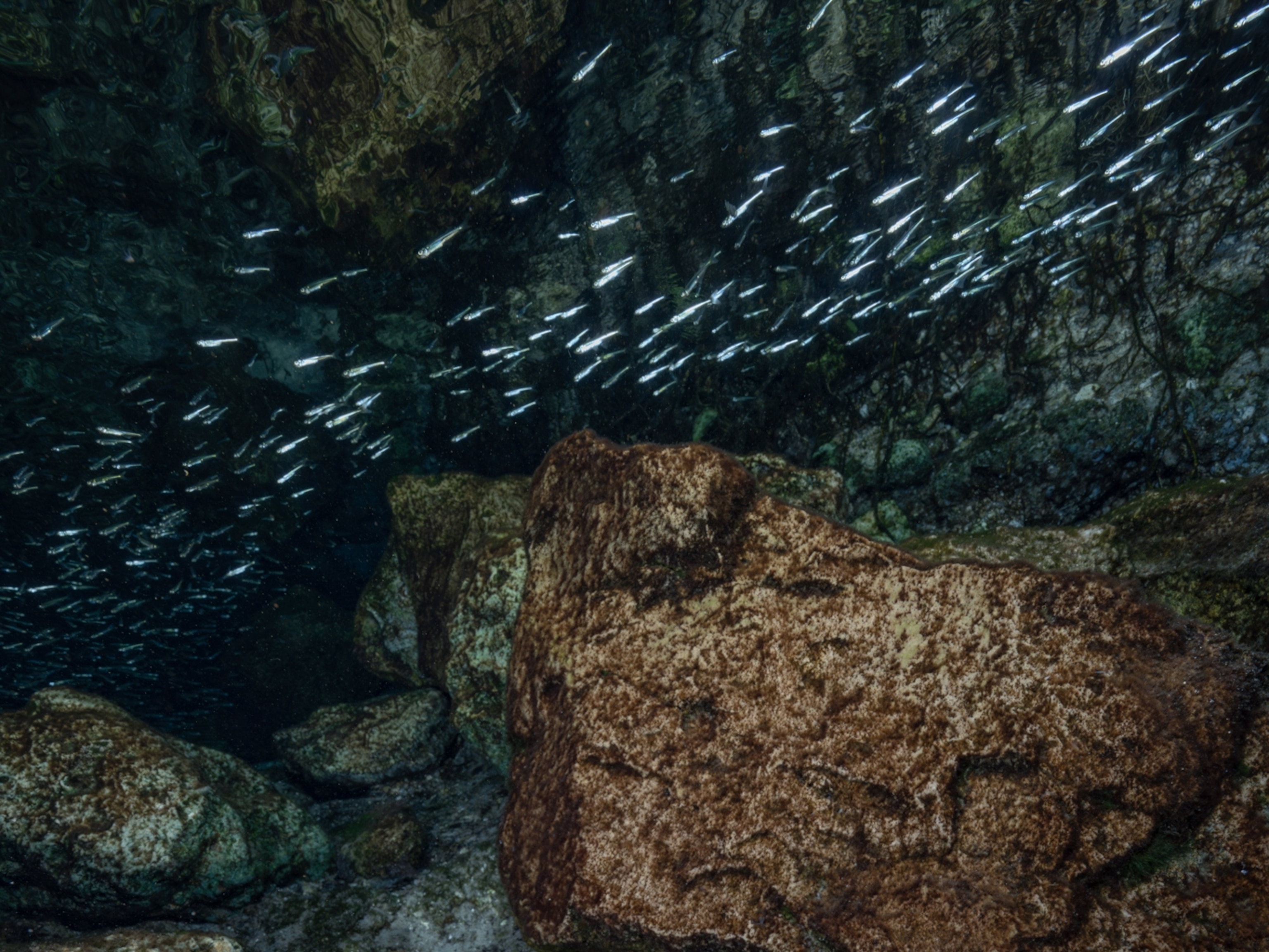Naked mole rats, like most creatures, don't like to be pinched or pricked—but just try to get one to yelp by rubbing lemon juice or red-hot chili peppers over a cut. It won't.
That's because the hairless, finger-size rats are numb to the burning sensation that almost every other mammal feels when exposed to acids and hot peppers.
New research published this week in the journal PLoS Biologybegins to unravel the mechanisms that make the mole rats impervious to these types of pain.
Previous research found that the animals lack a key messenger that carries the signal of burning pain through the nervous system.
In the new study the researchers reactivated the neurotransmitter on one foot of test rats, which got them to react to chili pepper exposure but not acids.
Further tests revealed that the naked mole rats are completely oblivious to acid, which is likely an evolutionary adaptation to their crowded, carbon dioxide-rich underground-living conditions.
The researchers also found that nerve connections in the naked mole rat's spinal column are different than those of any other animal.
The findings may lead to new treatments for human sufferers of dull, steady post-surgery pain, according to Thomas Park, a neurobiologist at the University of Illinois in Chicago who led the study.
The nerve fibers that carry information about achy pain are the same ones that carry information about acids and capsaicin—the active ingredient in chili peppers, he noted.
"What we need to do is understand how [the mole rat] solved that problem and how we can use that information to come up with new strategies to treat ... pain," Park said.
Accidental Discovery
Park and his colleagues stumbled upon the selective pain insensitivity of the naked mole rat by accident.
They were initially intrigued by the skin of the furless creatures—the only known cold-blooded mammals—which pack into tight underground burrows by the hundreds like bees and wasps.
A battery of previous tests to characterize the nerves in naked mole rat skin revealed it lacks a neurotransmitter called substance P. Neurologists associate substance P with dull, long-term pain in humans.
Park and his colleagues published those results in 2003, and have spent the last several years trying to tease apart the mole rat's related anatomy and physiology.
In one of the recent experiments they took a cold sore virus engineered to manufacture substance P and rubbed it on one foot of anesthetized rats—reactivating the pain neurotransmitter—to see if they would "feel the types of pain they normally don't," Park said.
When they tested the foot with capsaicin, the mole rats jerked the foot back and licked it. But the rats were still insensitive to acid.
"That made us figure out there's more going on than just the lack of this messenger," Park said.
They next performed a series of tests on how the rats' nerve fibers responded to various stimuli.
For capsaicin, they found that the nerve fibers reacted normally, but the rats themselves didn't show a normal behavioral response. So they examined the spinal cord and found that the nerve fibers connect in a different location of the nervous system than all other animals.
"The connections are made in another region of the spinal cord, which means we don't know what they're experiencing, if anything, when these fibers are activated by capsaicin," Park said.
For acid, however, the nerve fiber was completely unresponsive.
"They're just impervious to it at a very basic level and very much out in the skin itself, so it's not a central process," Park said.
He and his colleagues conclude that the lack of substance P, the unusual connection of nerve fibers to the spinal cord, and the adaptation to feel numb against acid combine to block a normal pain response to capsaicin and acids.
Acidic Environment
Thomas Finger is a professor of cell and developmental biology at the University of Colorado's Denver School of Medicine. He said the study uses some "clever science" to get at the mechanism that allows naked mole rats to survive in tightly packed underground burrows.
With hundreds of the rats clumped together in the lairs, the carbon dioxide levels from their breathing climbs to high levels, Park explained.
Carbon dioxide breaks down on contact with skin tissue and turns to acid.
Carbon dioxide in human environments is less than 0.1 percent, Park noted, but exceeds 2 percent in mole rat burrows and may be as high as 10 percent in their nesting chambers.
According to Finger, carbon dioxide levels that high would be very irritating to a human.
"Your eyes would sting, your nose would burn, you wouldn't like it at all," he said. After a few moments the air would trigger nerve endings to cause the nasal cavity and the lungs to swell up.
But the naked mole rats, the new research shows, "have neatly evolved a way of avoiding triggering this neural reflex," Finger said.
To learn more about how this adaptation evolved, study leader Park and his colleagues plan to study the neurobiology of other species, including Mexican free-tailed bats, which live by the thousands in caves, and Alaskan marmots, which winter in sealed burrows.
"The broad question is: How does the nervous system cope with environmental challenges?" Park said.








